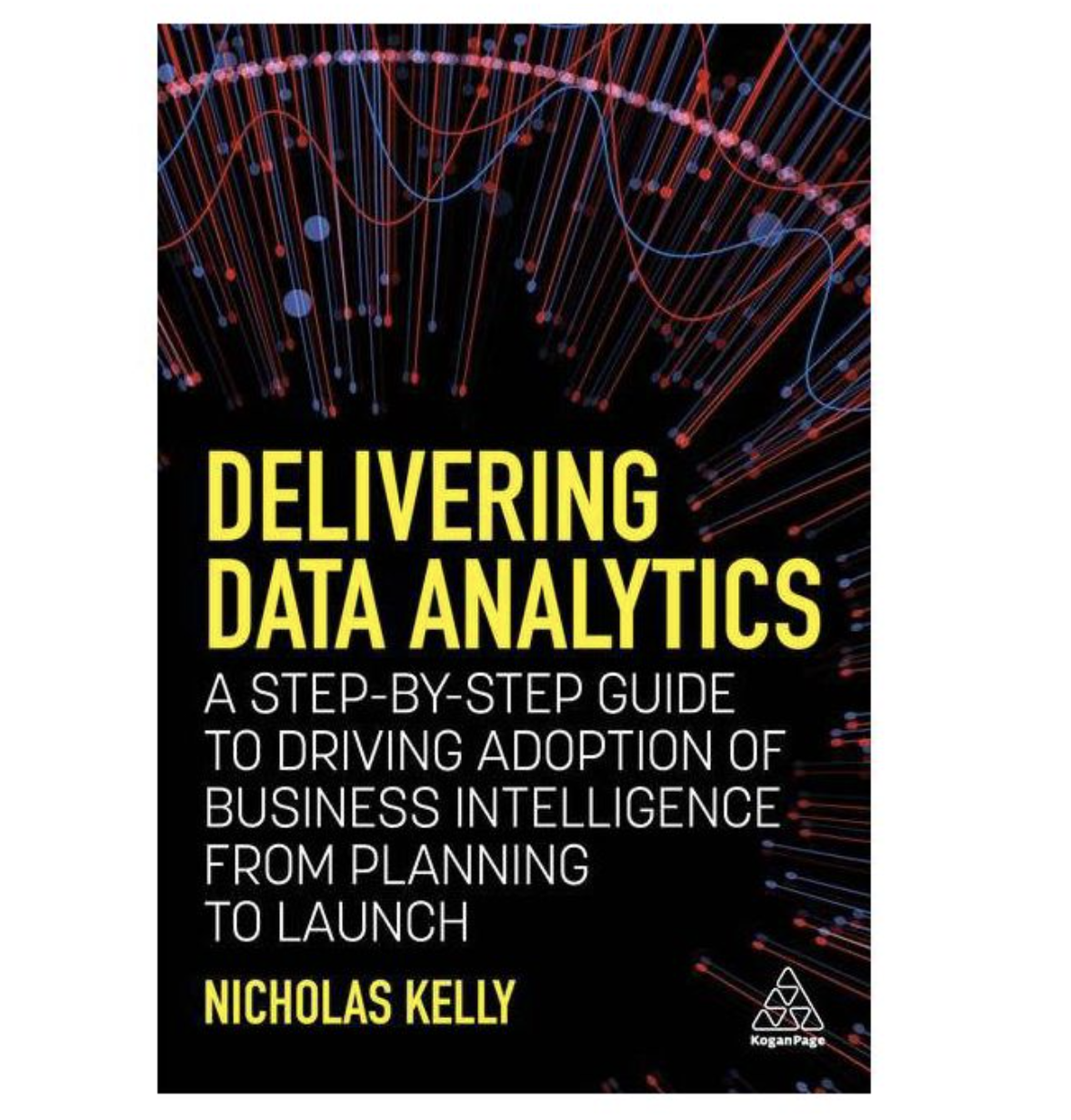In his book Delivering Data Analytics, author Nicholas Kelly presents us with a step-by-step guide to help Business Intelligence (BI) consultants drive BI adoption from planning to launch.
Throughout my career, certain books were paramount in driving my steps toward best practices. Every time new methodologies, processes, or technologies become available, I’ve always looked for authors that were a reference in that area and have added at least one book to my bookshelf. Currently, I use more than books: blog posts, papers, YouTube videos, online courses, you name it… but I always check if there are good books out there, too.
The book Delivering Data Analytics by Nicholas Kelly appeared on my radar at a moment when I was trying to build my “consultant persona,” to do some work on my own. I’ve been working as an individual contributor in several companies during my career, and now I think I have experienced enough to venture to do some work by myself.
When you work in a company, the company usually provides a plethora of methodologies that you can use in your work and applies constraints to make sure you follow the standards. You can focus solely on your role (mine was software engineering, so I only think about coding). When you are going to fly solo, it is a whole different game: you need to expand your awareness of many different aspects of the project. And this book did exactly that for me.
As the subtitle says, this book is “A Step-By-Step Guide to Driving Adoption of Business Intelligence from Planning to Launch.” The book is organized such that each chapter guides you through what you need to learn in order to deliver BI products successfully. This is not a book to be simply used as a reference guide: you need to read it in its entirety to understand all the details to create BI products that will be largely adopted by your customers. Although it is worth saying that some chapters could be used as reference guides on their own: for me, Chapters 3 (UX Principles), 4 (Requirements), 5 (Data Assessment), and 7 (Storytelling) are masterpieces that I go back to when I have to refresh my memory.
Chapter 3, about UX Principles, explains the relevant UX concepts that a consultant needs to know in order to run projects to build data visualization products. As a software engineer, my work was always on the back-end of data visualization solutions, so for me, UX concepts are not that clear, and as a matter of fact, were always confused with UI concepts. This chapter cleared up the concepts, taught me the basics, and even highlighted a whole new field of study for me.
Chapters 4 and 5 about Requirements and Data Assessment are probably the most important chapters for beginning data visualization consultants because they are a masterclass on how to understand what your customer wants, put that down in a way that your team can understand, and, later, determine the value and priority to deliver results and manage their adoption. For me, Chapter 4 was interesting because of the interview approach recommended for collecting project requirements, which was new to me. Nicholas introduced the concept of Business Value Questions to identify questions based on the value they will bring to our customers. Chapter 5 caught my attention due to the detailed explanation of scoring scales and how to use them. The Business Value Questions raised during the requirements gathering stage are scored against four dimensions: value, cost-effectiveness, ease of effort, and data. In fact, those two chapters are the heart of this book, and anyone doing consulting work in the BI field should read them at least once.
Since storytelling is one of the hottest topics in data visualization, Chapter 7 is also a must-read. Nicholas’s approach to storytelling is systematic and achievable. He starts by explaining the principles of storytelling and builds from there, giving the reader more confidence. The scenario mapping flow is an awesome tool, and everyone should learn it! Its process consists of taking a Business Value Question at one end and assigning the various scenarios that might impact the answer to that question at the other end. During this process, we break the Business Value Question into several elements we can use to build our visualization – KPIs, charts, and filters.
To end this review, there are two other points that I would like to highlight: the stories and the companion material.
At the start and at key points throughout each chapter, Nicholas includes “story boxes.” These story boxes are where Nicholas shares his experience in consulting and demonstrates how the knowledge presented in the chapter will help you. Those tidbits of real-world situations connect the reader to the book because you see some of your most common issues written down there.
The last thing to mention is the companion material. The set of templates and documentation available as companion material is knowledge distilled into a ready-to-use format. Just enjoy and use templates like Dashboard Strategy, Stakeholder Interview, User Interview, Executive/User Persona, and more, because it is not every day that we can have good material available from experts in the field for the cost of a book.
Some of you may be thinking that I’m exaggerating my compliments to Nicholas here. I’m not! This book filled a very specific gap in my skillset, so that explains why I think so highly of it. Nicholas did a tremendous job in putting this content together in a pragmatic and straightforward way.
Walter Ritzel Paixão Côrtes is a product designer and data visualization practitioner who works solving users problems through a data-driven approach.











